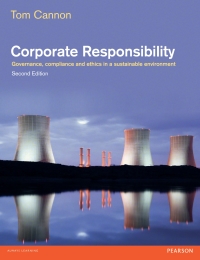In 2008, after a very successful time as Chief Executive of Marks & Spencer, Sir Stuart took
Question:
In 2008, after a very successful time as Chief Executive of Marks & Spencer, Sir Stuart took the controversial decision to combine his role with that of Executive Chairman despite concerns expressed by regulators and some shareholders. Comments by some of these led him to defend his fellow board members saying
‘they’re not muppets’ – and confirming that he and the company would ‘revert to separate Chairman and Chief Executive at that time’.
Sir Richard Greenbury, one of his predecessors, defended the decision despite it being counter to corporate governance best practice as implied by his own
‘Greenbury Report’. Besides this, major institutional shareholders such as Brandes and Invesco Perpetual backed the decision.
Three years later, Sir Stuart departed from the company with a cash bonus of £1.36 million, as part of a total remuneration during his final year at the company of £2.77 million, despite a disappointing year for the company’s shares.
At roughly the same time, Sir Stuart called for a review in the gap between executive pay and staff wages. ‘We have to accept that over the last year or three the division between the lowest paid and the highest paid has got wider. So that does need looking at’, he said. ‘The biggest rule that I think people should set themselves is: no pay for failure. That’s what people really, really hate.’
Question What does this or similar issues in executive behaviour tell us about business leadership?
Step by Step Answer:






